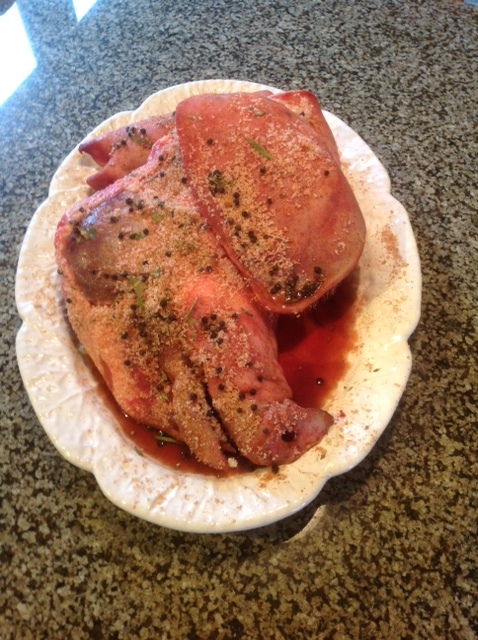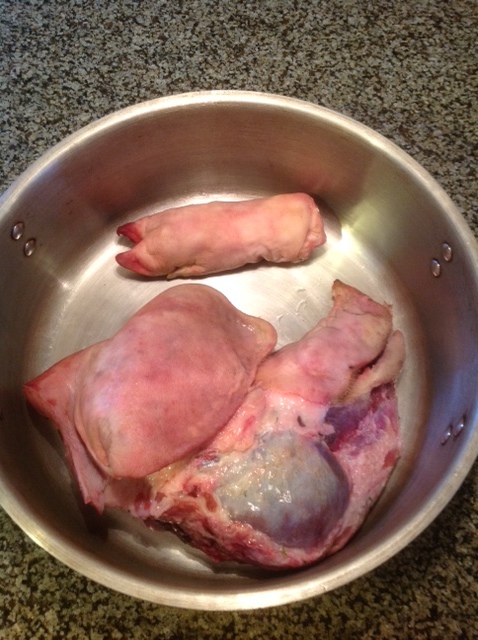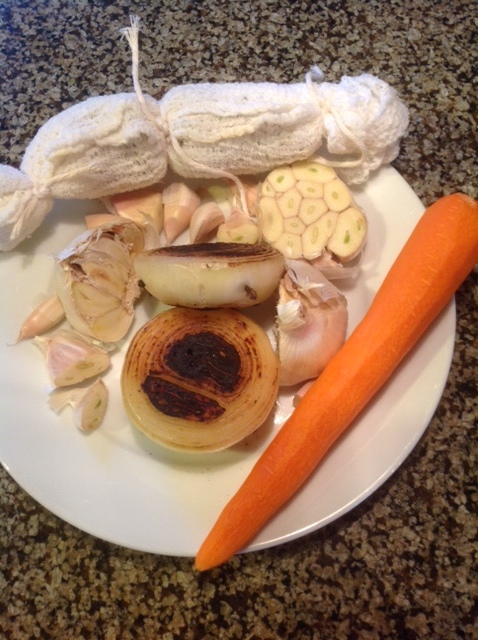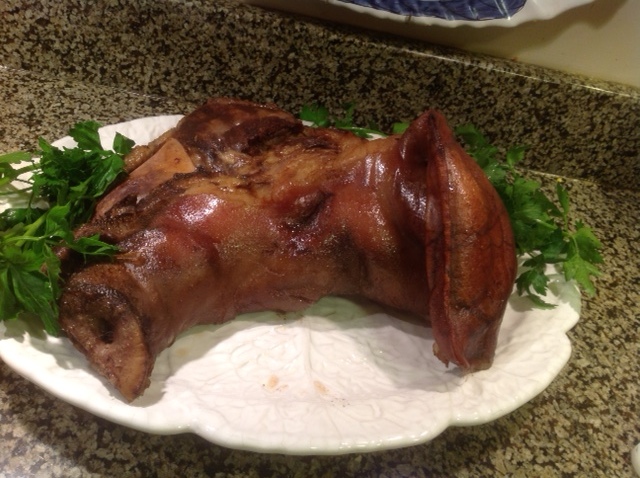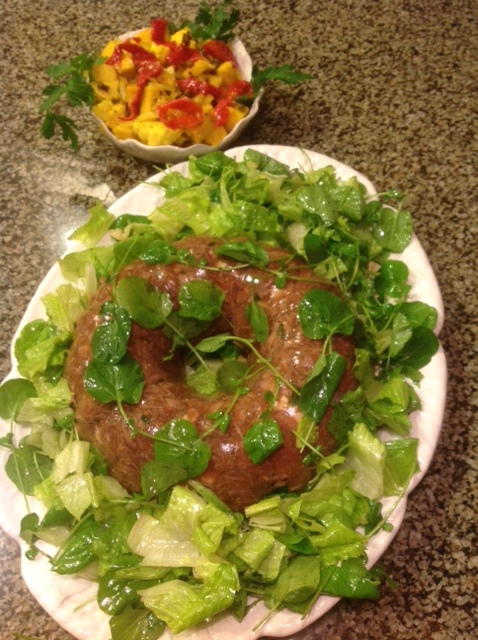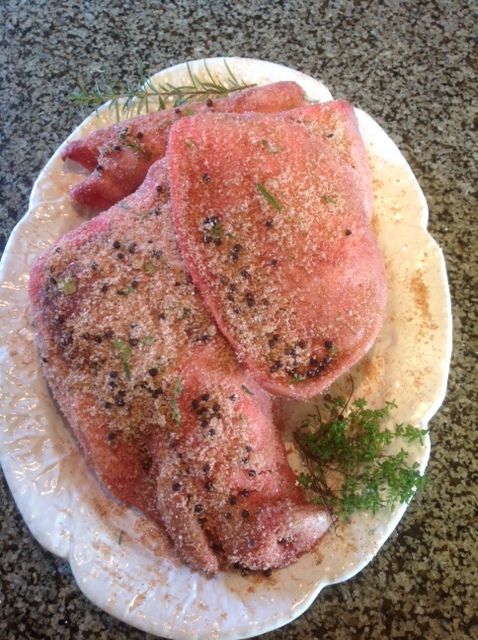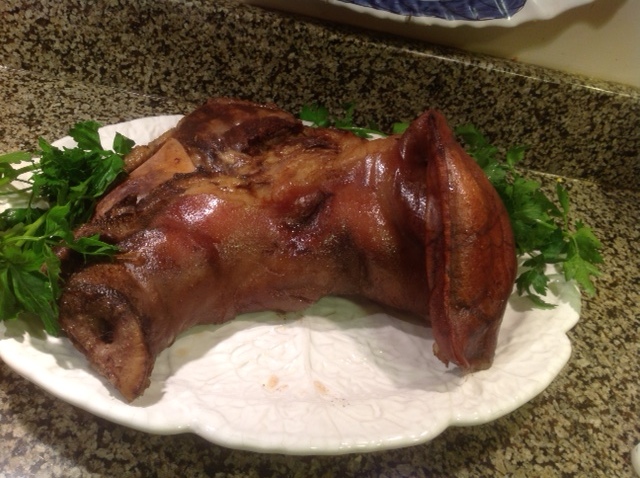Preparing the Pig Face Peasant Style
What's Old is New Again: Marc Forgione to Elizabeth David
Doing a bit of repair work on my blog to update the subscribe buttons I found this story from two years ago that I never put the photos in to complete it and post it. So here's what should have happened and is even more relevant today given the Cochon 555 Tour was in Seattle over the weekend preparing the top breeds of pigs and accompaniments.
The nose to tail trend in restaurants is inspiring reviewing and modifying classic recipes for body parts that have been absent in U.S. grocery stores and butcher shops for some time. Trotters, tails, tripe and heads are appearing on menus to the delight and consternation of diners. Having experienced the pig head feast twice at Radiator Whiskey in Seattle, where they brine and smoke with pronounced BBQ flavors, I was excited to get a half head in my share of a Gloucestershire pig, raised and butchered by the Farmstead Meatsmith on Vashon Island.
When it came to preparing my pig head at home for friends, one of whom had taken a butchering class with me taught by the abbatoir and owner at Farmstead, I wanted to go another route than the BBQ flavors. I stumbled on Marc Forgione's recipe online and loved the Mediterranean flavors, emphasizing rosemary and thyme in the brine and poaching seasonings with a simple browning of the pigs head before serving. (Marc has a famous restauranteur father, Larry Forgione, and a restaurant and book bearing his own name in New York City,) Although he called it poaching, it was a confit process, cooking the head in eight cups of canola oil for three hours that his recipe specified. My pig is the old fashioned full fat kind from the days when the lard was as valuable as the meat. I saw no need for the canola oil, which also might add some flavor to the natural pig fat as it rendered in the poaching. All the other recipes I didn't use specified the same approximately three hours of gentle simmering in water, or until tender, so I didn't think it was an egregious adaptation of the recipe to go with water instead of oil.
The quest for a recipe went offline as well with reviewing the eight pig head recipes I have in my library according to Eat Your Books. The Good Cook Series: Terrines, Pates and Galatines (1982) edited by Richard Olney (Variety Meats ) and you will see variations on seasonings, mostly French, but the presentation was typically pressed into a mold and later garnished with watercress, parsley and fresh herbs. Olney included an Elizabeth David recipe that made me compare it with one in her book Elizabeth David Classics, Pig's Head in Jelly that seemed the best of the bunch. Her choice of coriander, garlic, parsley and thyme was simpatico with Forgione's seasonings.
As I pulled, chopped and discarded bone and gristle, I ate quite a bit of the meat still warm from the poaching liquid. Sweet delicate meat kissed by the rosemary and thyme. I was so glad I hadn't gone the BBQ a route. Later covered with the poaching liquid that jelled up nicely, I was also pleased with the fresh parsley and garlic enhancements. I put two mustards on the table and I don't think anyone paid attention to them. Elizabeth David was also correct that the watercress salad and good bread would be all that was necessary to make this peasant's dinner.
The photos chronicle the process from unwrapping the parts, dry brining, poaching, browning the skin and to the table with Elizabeth David's presentation from a mold garnished with water cress salad and mustard. The cauliflower pickles in the bowl are part of Marc Forgione's recipe.



